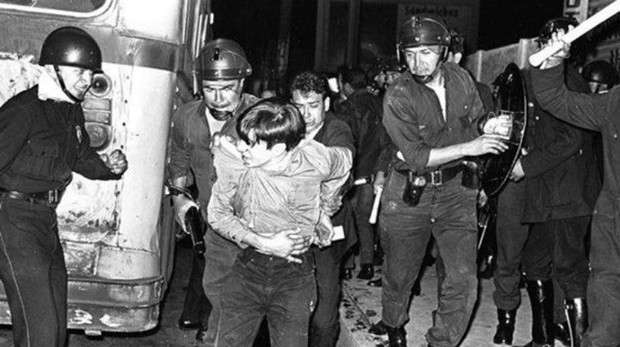Following a summer of increasingly large demonstrations protesting against the 1968 Olympics held in Mexico City, the Mexican Armed Forces opened fire on 2 October 1968 on unarmed civilians, killing an undetermined number, in the hundreds.
What was the purpose of the uprising in Mexico City in 1968?
In the background, the movement was motivated by the global protests of 1968 and struggled for a democratic change in the country, more political and civil liberties, the reduction of inequality, and the resignation of the government of the ruling Institutional Revolutionary Party (PRI) that many considered authoritarian
Ten days before the start of the Olympics, the government ordered the gathering in Plaza de las Tres Culturas to be broken up. Some 5000 soldiers and 200 tankettes surrounded the plaza. Hundreds of protesters and civilians were killed and over 1000 were arrested.

The Mexican Movement of 1968, known as the Movimiento Estudiantil (student movement) was a social movement that happened in Mexico in 1968. A broad coalition of students from Mexico’s leading universities garnered widespread public support for political change in Mexico, particularly since the government had spent large amounts of public funding to build Olympic facilities for the 1968 Olympics in Mexico City. The movement demanded greater political freedoms and an end to the authoritarianism of the PRI regime, which had been in power since 1929.
Student mobilization on the campuses of the National Autonomous University of Mexico, National Polytechnic Institute, El Colegio de México, Chapingo Autonomous University, Ibero-American University, Universidad La Salle and Meritorious Autonomous University of Puebla, among others created the National Strike Council. Its efforts to mobilize Mexican people for broad changes in national life was supported by sectors of Mexican civil society, including as workers, peasants, housewives, merchants, intellectuals, artists, and teachers.

The movement had a list of demands for the Mexican president Gustavo Díaz Ordaz and Government of Mexico for specific student issues as well as broader ones, especially the reduction or elimination of authoritarianism. In the background, the movement was motivated by the global protests of 1968 and struggled for a democratic change in the country, more political and civil liberties, the reduction of inequality and the resignation of the government of the ruling Institutional Revolutionary Party (PRI) that they considered authoritarian and by then had governed Mexico for almost 40 years.
The political movement was suppressed by the government with the violent government attack on a peaceful demonstration on 2 October 1968, known as the Tlatelolco Massacre. There were lasting changes in Mexican political and cultural life because of the 1968 mobilization.

This social movement brought unavoidable consequences which permanently changed the future of Mexico,[9] but these political and social changes were not immediate, as the repression continued with the Corpus Christi massacre in 1971.
The major change caused by this movement came at a political level. The citizens had the opportunity to live a new democracy in which their opinion could actually bring change in society. People no longer completely trusted the government and would no longer live completely under the conscious control of their government, nor tolerate it anymore,[28] although they were not completely free. Octavio Paz resigned from his post as Mexican ambassador to India as an act of protest against the government’s harsh repression of the student movements. However, there were also some older intellectuals who were in favor of the government, like Agustín Yañez.
Source: Enrique Krauze

